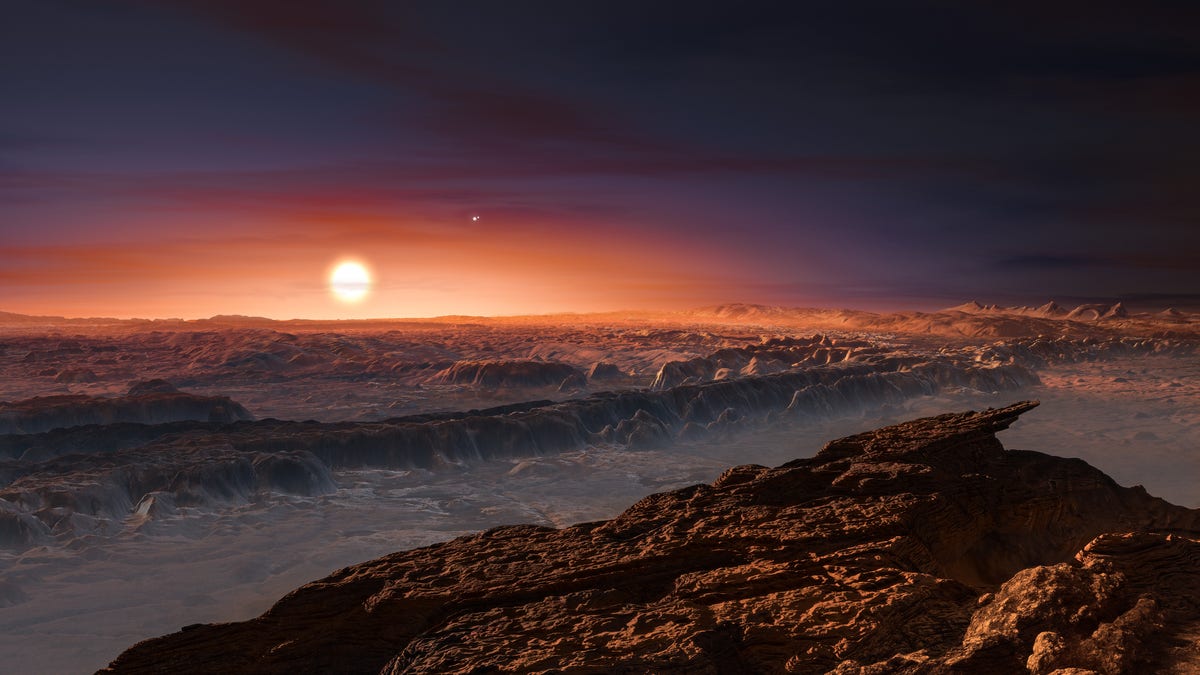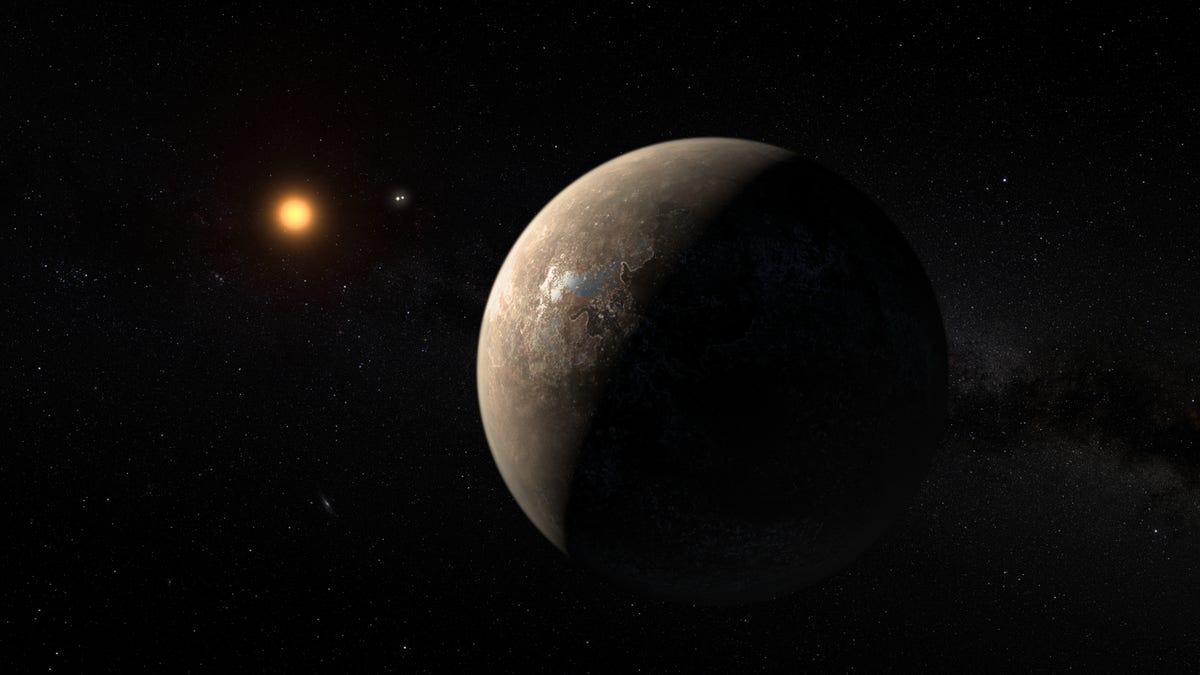
An artist's impression shows a view of the surface of the planet Proxima b orbiting the red dwarf star Proxima Centauri, the closest star to the Solar System. (ESO/M. Kornmesser)
Scientists have discovered that the star closest to Earth outside of our solar system has a planet. And not only that, if the conditions there are right, it could potentially support life.
Meet Proxima b, a terrestrial planet orbiting a small star called Proxima Centauri, and our nearest planetary neighbor beyond the solar system. It's just a little over four light years away.
Proxima b is at least 1.3 times the size of Earth. While it’s very close to the star it orbits, a red dwarf, that star is also much smaller and dimmer than our Sun, meaning that the temperature conditions on the planet could allow liquid water to exist on its surface. That puts it in the "habitable zone," or "temperate zone." But one important factor is whether or not it has an atmosphere, which scientists don’t yet know.

This artist's impression shows the planet Proxima b orbiting the red dwarf star Proxima Centauri, the closest star to the Solar System. The double star Alpha Centauri AB also appears in the image between the planet and Proxima itself. (ESO/M. Kornmesser)
“Succeeding in the search for the nearest terrestrial planet beyond the solar system has been an experience of a lifetime, and has drawn on the dedication and passion of a number of international researchers,” Guillem Anglada-Escudé, the paper’s lead author and an astronomer at Queen Mary University of London, said in a statement. “We hope these findings inspire future generations to keep looking beyond the stars. The search for life on Proxima b comes next.”
There are distinct differences between Proxima b and Earth. For one, the exoplanet— as planets outside of our solar system are called— orbits its star about every 11 days. It also may orbit in such a way that one side is locked always facing the star, meaning that half the planet is always bright and hot and the other is always dark and cold. And it receives more radiation from the star than Earth does from the Sun.
Scientists studied how the star, Proxima Centauri, moves slowly— just 3 mph— towards the Earth and away from it through space, to determine that it had a planet orbiting it every 11.2 days. Proxima b is just 4.3 million miles from Proxima Centauri, while Earth is much further away from the Sun, at about 93 million miles distant. Scientists have studied the possibility that there was a planet in this system for years.
Related:
“These observations naturally raise the question of whether Proxima Centauri b could harbour life,” Artie Hatzes, of the Thuringian State Observatory in Germany, wrote in an article in the journal Nature, where the study will be published, regarding the discovery. “However, circling a star at the right distance is no guarantee that the planet has liquid water, or even an atmosphere that can support life.”
The high-profile study concludes by stating that Proxima Centauri could be a good target for “robotic exploration in the coming centuries.”
Follow Rob Verger on Twitter: @robverger